August 6, 2025 by 100XBuilds Team
Business Valuation Guide: What Drives Value in Custom Homes
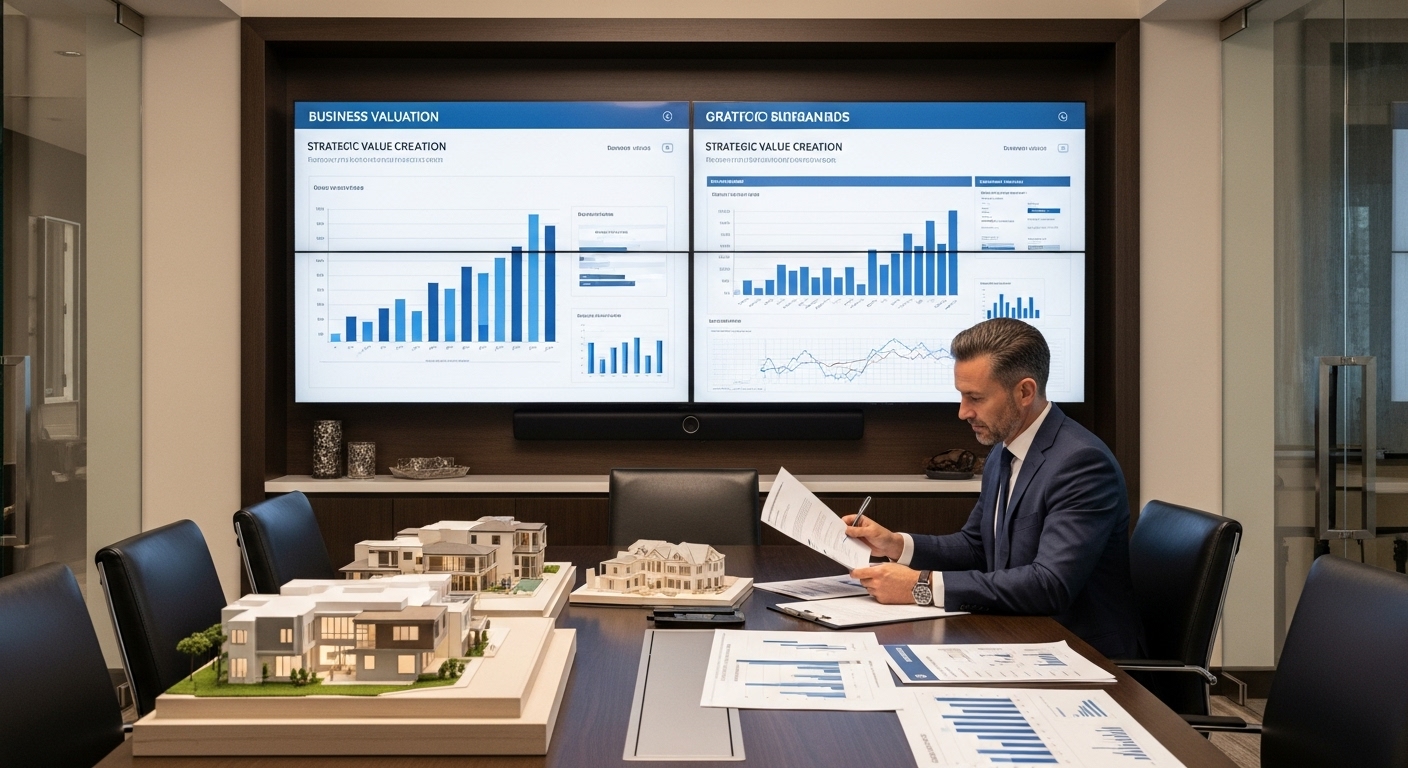
When Toll Brothers sold their luxury division for 2.1x revenue in 2019, industry insiders weren't surprised by the premium multiple. The buyer recognized what savvy custom home builders already know: companies with the right value drivers command exponentially higher valuations than their commodity-focused competitors.
For custom home builders generating $10M+ annually, understanding these value drivers isn't just academic—it's the difference between a lifestyle business worth 0.8x revenue and a strategic asset commanding 2.5x+ revenue multiples.
The Custom Home Building Valuation Landscape
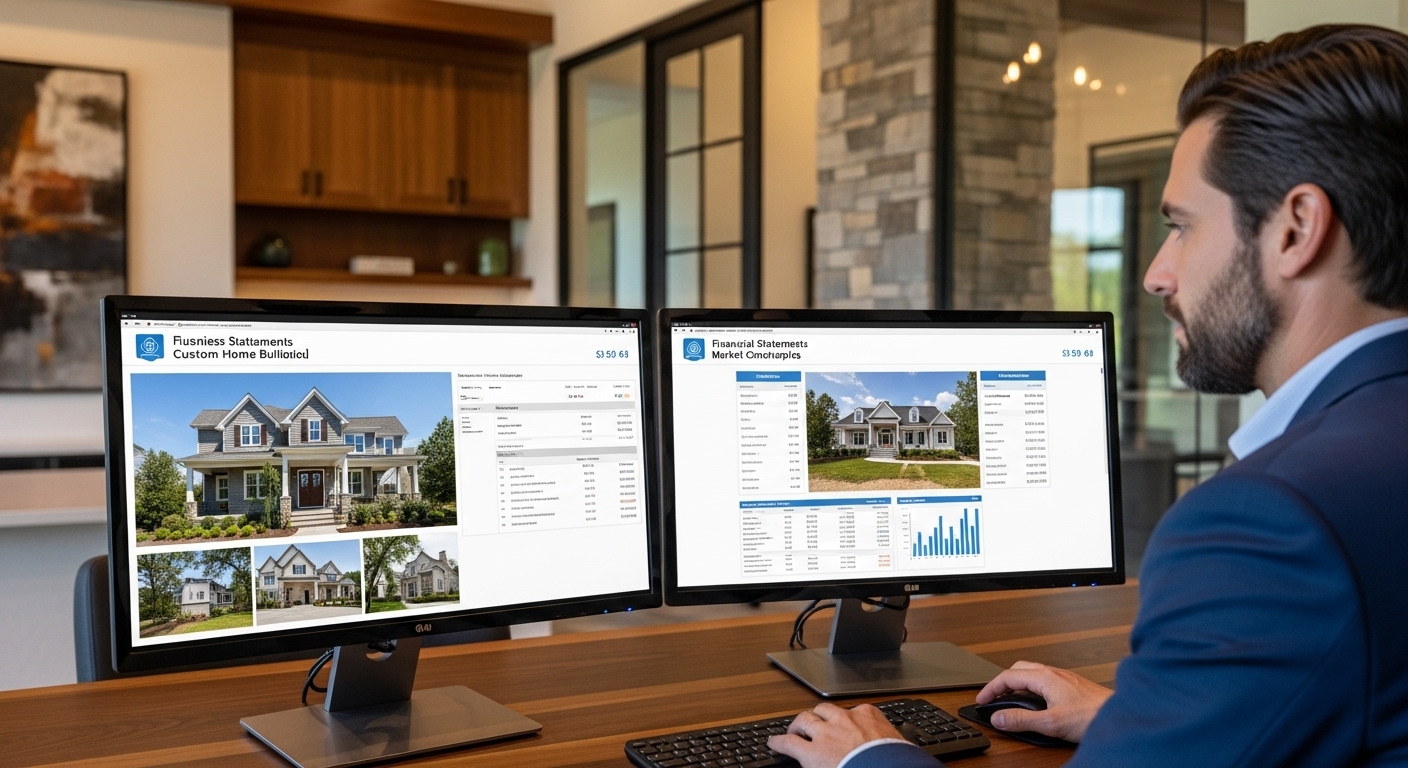
The custom home building industry presents unique valuation challenges that traditional business appraisal methods often miss. Unlike production builders who compete on volume and efficiency, luxury custom builders operate in a relationship-driven, project-based environment where intangible assets often represent 40-60% of total enterprise value.
Recent market data reveals telling patterns:
Top-quartile custom builders (those with strong value drivers) sell for 2.2-2.8x revenue
Average performers typically achieve 1.2-1.6x revenue multiples
Bottom-quartile builders struggle to exceed 0.8-1.0x revenue
The gap isn't coincidental. Sophisticated buyers—whether strategic acquirers or private equity firms—pay premiums for businesses that demonstrate predictable growth, operational excellence, and defensible market positions.
Primary Value Driver #1: Recurring Revenue Streams
The most valuable custom home builders have cracked the code on recurring revenue. While individual home projects remain the core business, premium valuations go to companies that generate predictable, ongoing income streams.
Design-Build Retainer Models
Leading builders structure initial design phases as separate, profitable engagements. Rather than absorbing design costs into construction pricing, they charge $25,000-$75,000 upfront retainers that convert to construction contracts at 85%+ rates.
One $15M builder we analyzed increased their valuation multiple from 1.4x to 2.1x by implementing design retainers that generated $400,000 in annual recurring revenue with 78% gross margins.
Maintenance and Warranty Programs
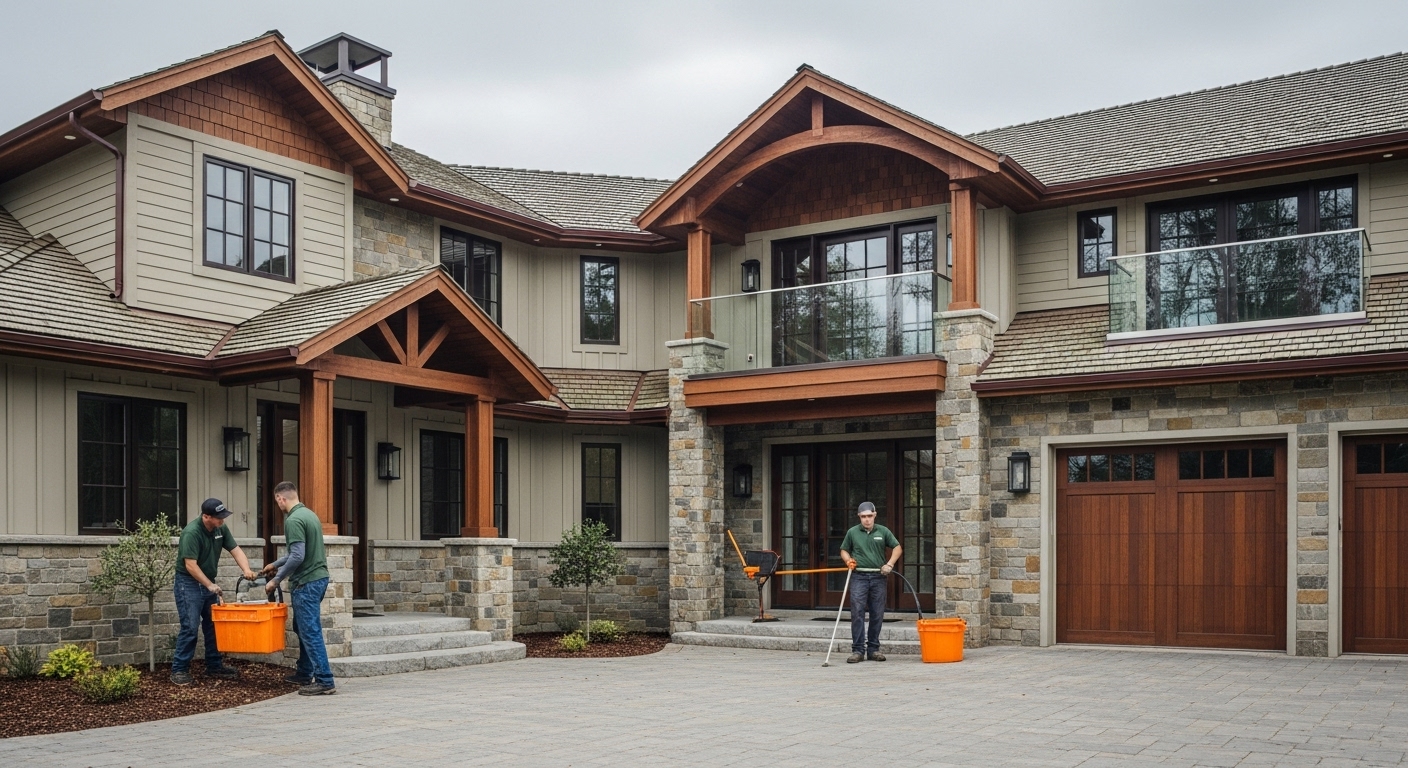
Smart builders don't walk away after the final walkthrough. They create comprehensive maintenance programs that generate $3,000-$8,000 annually per completed home.
Key components include:
HVAC system maintenance and optimization
Exterior cleaning and seasonal preparations
Landscape management and irrigation system care
Technology system updates and troubleshooting
Renovation and Addition Pipeline
The most valuable insight: satisfied custom home clients become repeat customers. Top-performing builders maintain detailed databases of past clients, tracking life changes that trigger renovation needs.
Average custom home builders complete 0.2 additional projects per past client. Premium builders achieve 0.7+ additional projects per client through systematic relationship management.
Primary Value Driver #2: Operational Scalability
Buyers pay premiums for businesses that can grow without proportional increases in management complexity. Custom home building traditionally suffers from "founder dependency syndrome," but the most valuable companies have systematized their operations.
Project Management Systems
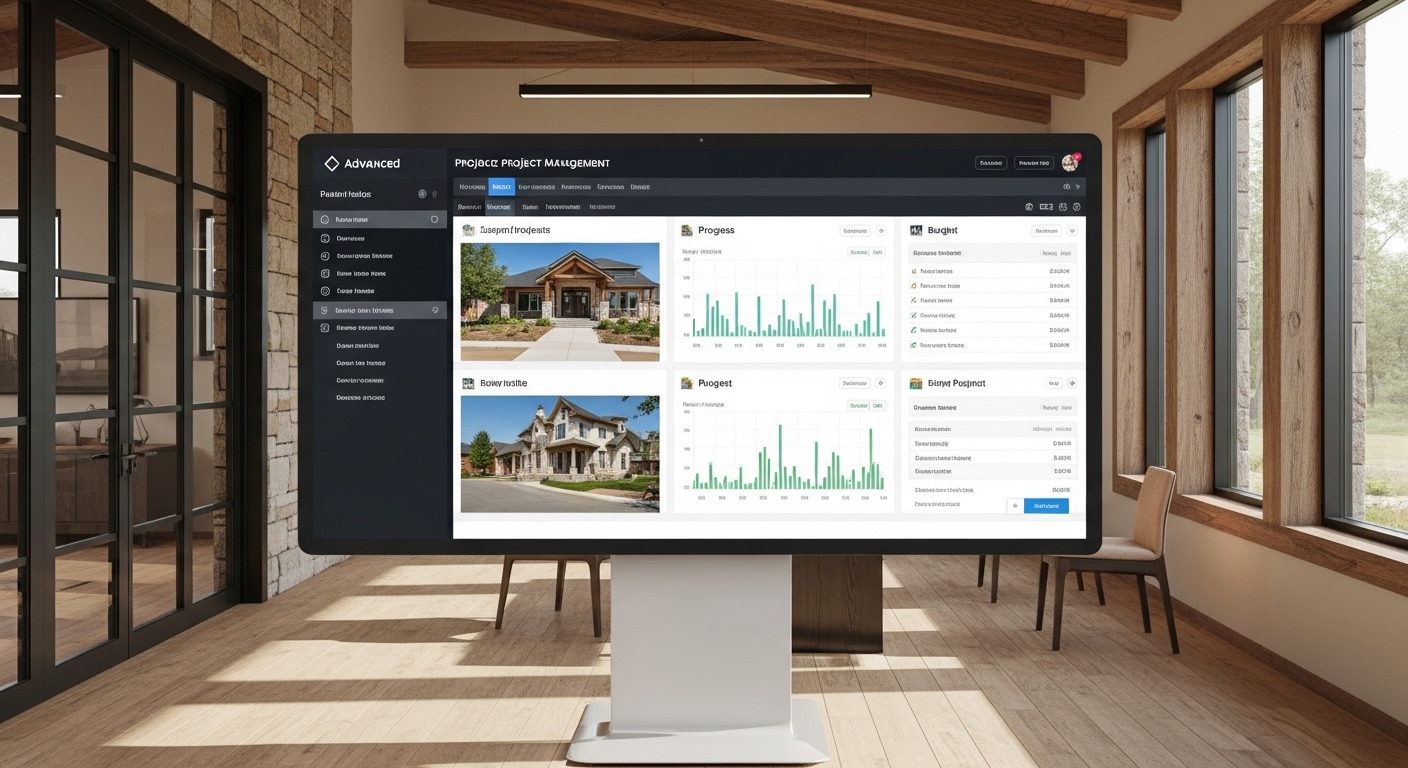
Leading builders utilize comprehensive project management platforms that track every aspect of construction from initial design through final delivery. These systems provide:
Real-time budget tracking with variance alerts
Automated vendor communication and scheduling
Client portal access for transparency and engagement
Quality control checkpoints with photo documentation
Standardized Processes
While each custom home is unique, the process of delivering that home can be systematized. Top-performing builders document and standardize:
Design development workflows: 15-20 defined stages from initial consultation to final plans
Vendor management protocols: Standardized contracts, performance metrics, and payment terms
Quality control procedures: 47-point inspection checklists at key construction milestones
Client communication schedules: Predetermined touchpoints that reduce anxiety and build confidence
Primary Value Driver #3: Market Position and Brand Strength
In luxury markets, brand perception directly correlates with pricing power and profit margins. The most valuable custom builders have established themselves as the definitive choice for discerning clients.
Geographic Market Dominance
Rather than spreading thin across multiple markets, premium builders dominate specific geographic areas. Market leadership in a defined territory creates several advantages:
Referral network density: Higher concentration of past clients generates more word-of-mouth referrals
Vendor relationships: Preferred status with top-tier subcontractors and suppliers
Regulatory familiarity: Deep knowledge of local building codes and permitting processes
Brand recognition: Top-of-mind awareness among architects, designers, and real estate professionals
One $12M builder increased their valuation by 40% by exiting two secondary markets and doubling down on their primary territory, achieving 23% market share among homes over $1.5M.
Awards and Recognition
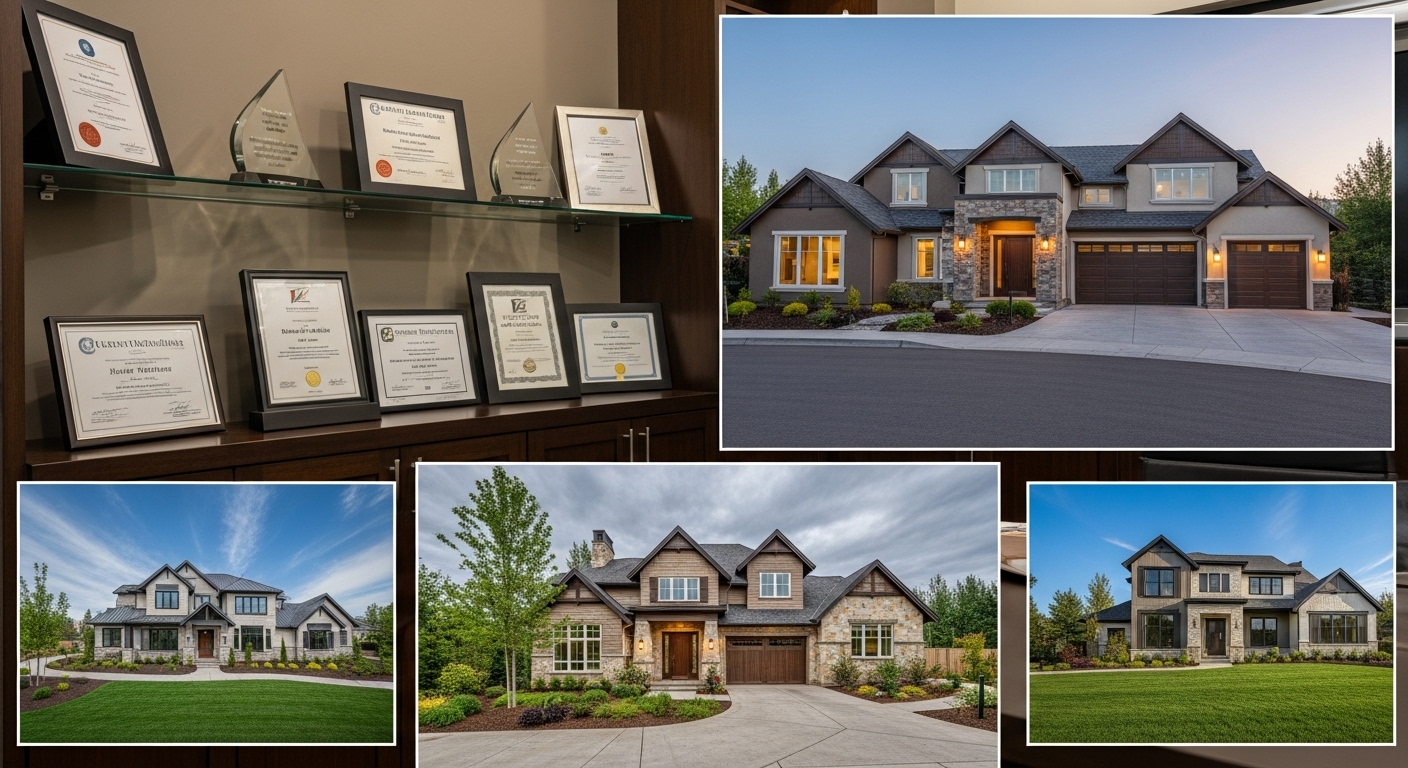
Strategic award pursuit isn't vanity—it's value creation. Builders with consistent industry recognition command 15-25% pricing premiums and attract higher-quality clients.
Target recognition includes:
National Association of Home Builders awards
Local parade of homes recognition
Architectural and design publication features
Industry association leadership positions
Primary Value Driver #4: Financial Performance and Predictability
Sophisticated buyers analyze financial performance through multiple lenses, looking beyond top-line revenue to understand profitability patterns and cash flow predictability.
Gross Margin Consistency
The most valuable custom builders maintain gross margins of 22-28% across economic cycles. This consistency demonstrates pricing discipline and cost control capabilities that buyers value highly.
Key margin protection strategies:
Fixed-price contracts with escalation clauses: Protect against material cost inflation
Detailed change order processes: Capture additional profit from client modifications
Vendor partnership agreements: Secure favorable pricing through volume commitments
Value engineering capabilities: Maintain margins while meeting client budgets
Working Capital Management
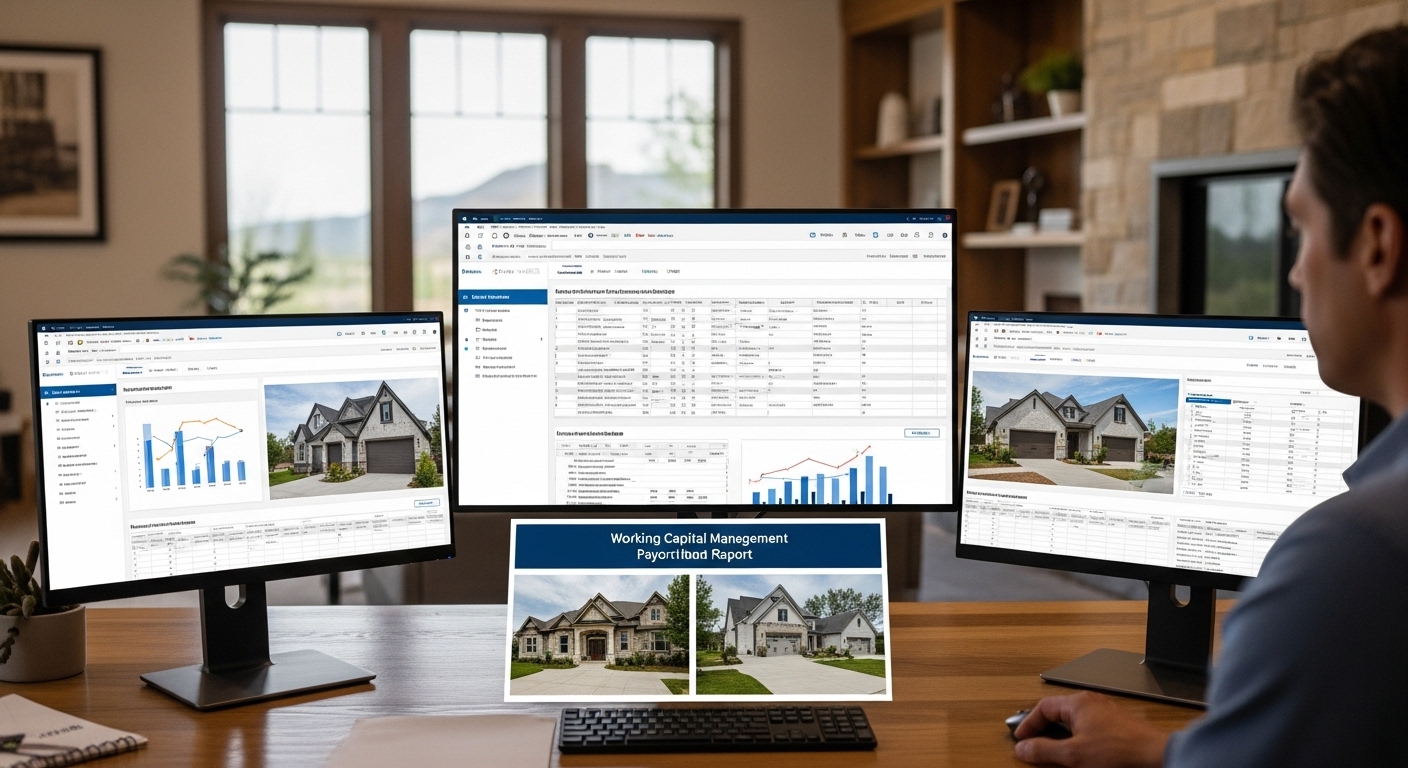
Custom home building requires significant working capital, but the best operators minimize cash requirements through strategic payment structuring.
Optimal payment schedules typically include:
10-15% deposit upon contract signing
25-30% at foundation completion
20-25% at framing completion
20-25% at substantial completion
15-20% final payment after walkthrough
Client Concentration Risk
Buyers heavily discount valuations when individual clients represent more than 15% of annual revenue. The most valuable builders maintain diversified client bases with no single project exceeding 12% of annual revenue.
Primary Value Driver #5: Management Team Depth
The transition from founder-led to management-led operations represents a critical inflection point in business valuation. Buyers pay significant premiums for companies that can operate successfully without daily founder involvement.
Key Management Positions
Operations Manager: Oversees day-to-day construction activities and vendor relationships
Project Managers: Manage individual home construction from start to finish
Business Development Manager: Handles lead generation, client relationships, and sales processes
Financial Controller: Manages accounting, cash flow, and financial reporting
Succession Planning
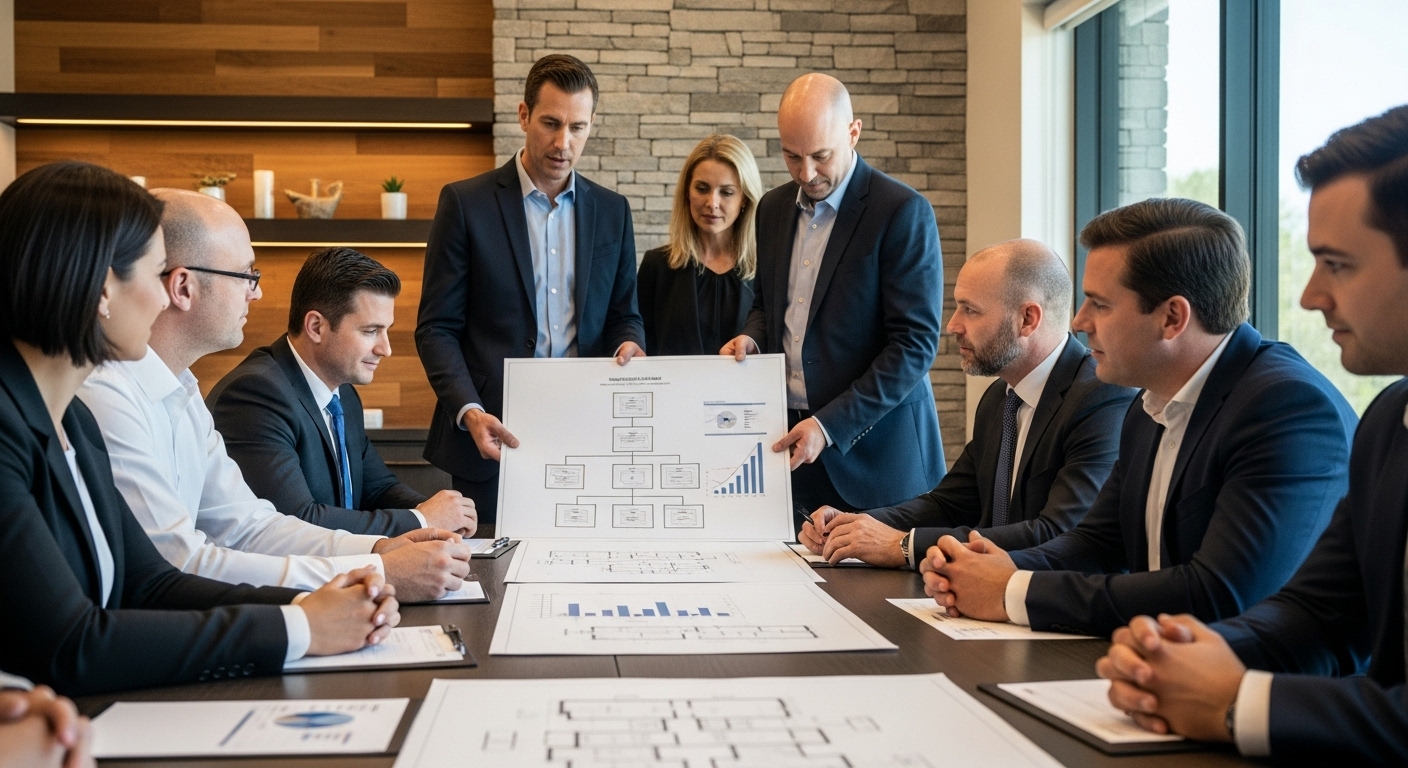
The most valuable builders have documented succession plans that address both planned and unplanned leadership transitions. These plans include:
Cross-training programs: Multiple team members capable of handling critical functions
Documented procedures: Written processes that enable consistent execution
Performance incentives: Compensation structures that retain key personnel
Ownership transition options: Clear pathways for key employees to acquire equity stakes
Secondary Value Drivers That Amplify Multiples
Beyond the primary drivers, several secondary factors can significantly impact valuation multiples for sophisticated buyers.
Technology Integration
Modern custom home builders leverage technology throughout their operations:
Building Information Modeling (BIM): 3D modeling that reduces errors and improves client visualization
Drone surveying and progress monitoring: Efficient site documentation and marketing content
Smart home integration expertise: Capability to design and install advanced home automation systems
Virtual reality design presentations: Enhanced client experience and faster decision-making
Sustainability and Energy Efficiency
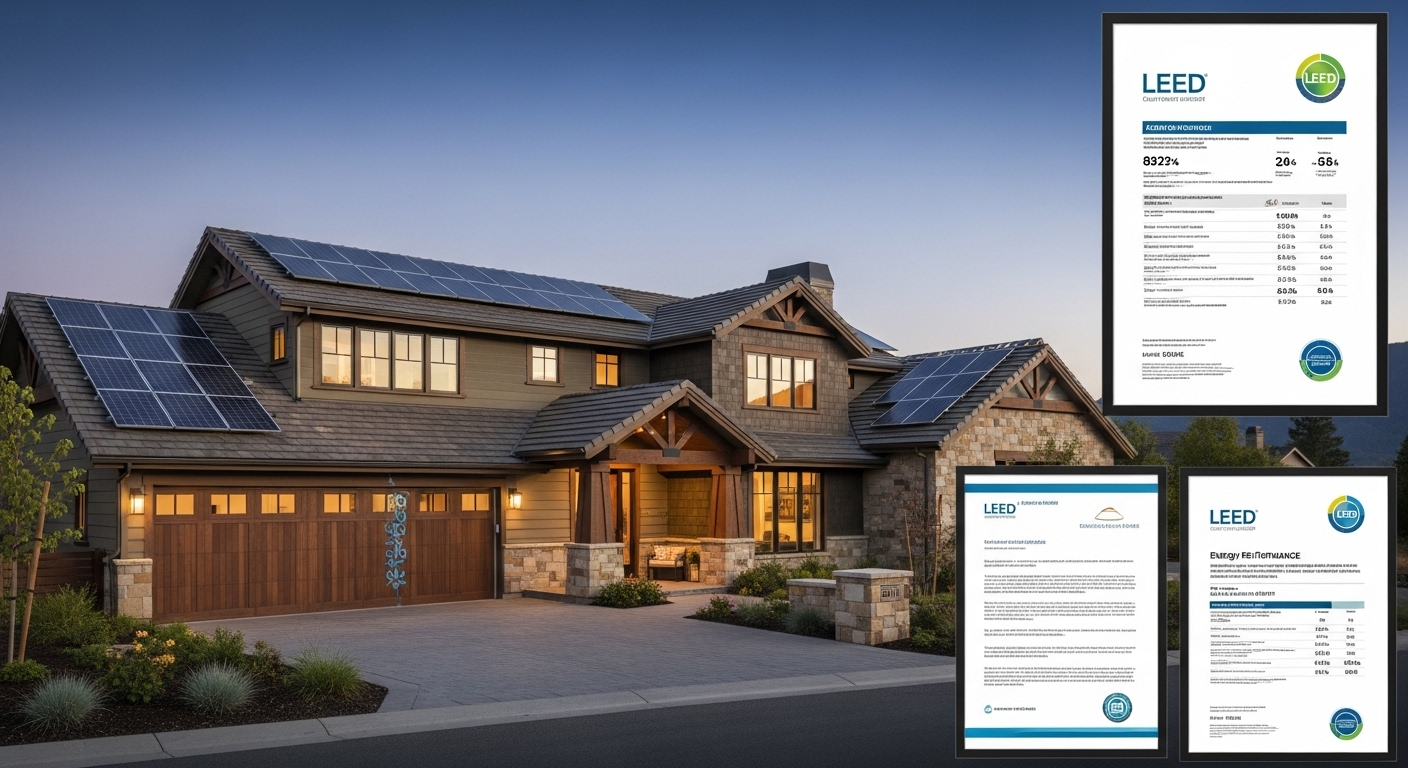
Environmental consciousness drives premium pricing in luxury markets. Builders with demonstrated expertise in sustainable construction command higher valuations through:
LEED certification capabilities: Ability to deliver certified green homes
Energy-efficient design expertise: Knowledge of advanced HVAC, insulation, and window systems
Sustainable material sourcing: Relationships with eco-friendly suppliers and vendors
Net-zero energy home experience: Capability to design and build energy-neutral homes
Valuation Methodologies for Custom Builders
Professional valuations typically employ multiple methodologies to establish fair market value ranges.
Revenue Multiple Approach
Most commonly used for custom builders, this method applies industry multiples to trailing twelve-month revenue. Multiples vary based on:
Company size: Larger builders typically command higher multiples
Growth trajectory: Consistent growth adds 0.2-0.4x to base multiples
Market position: Market leaders receive premium valuations
Profitability: Higher-margin builders justify increased multiples
Discounted Cash Flow Analysis
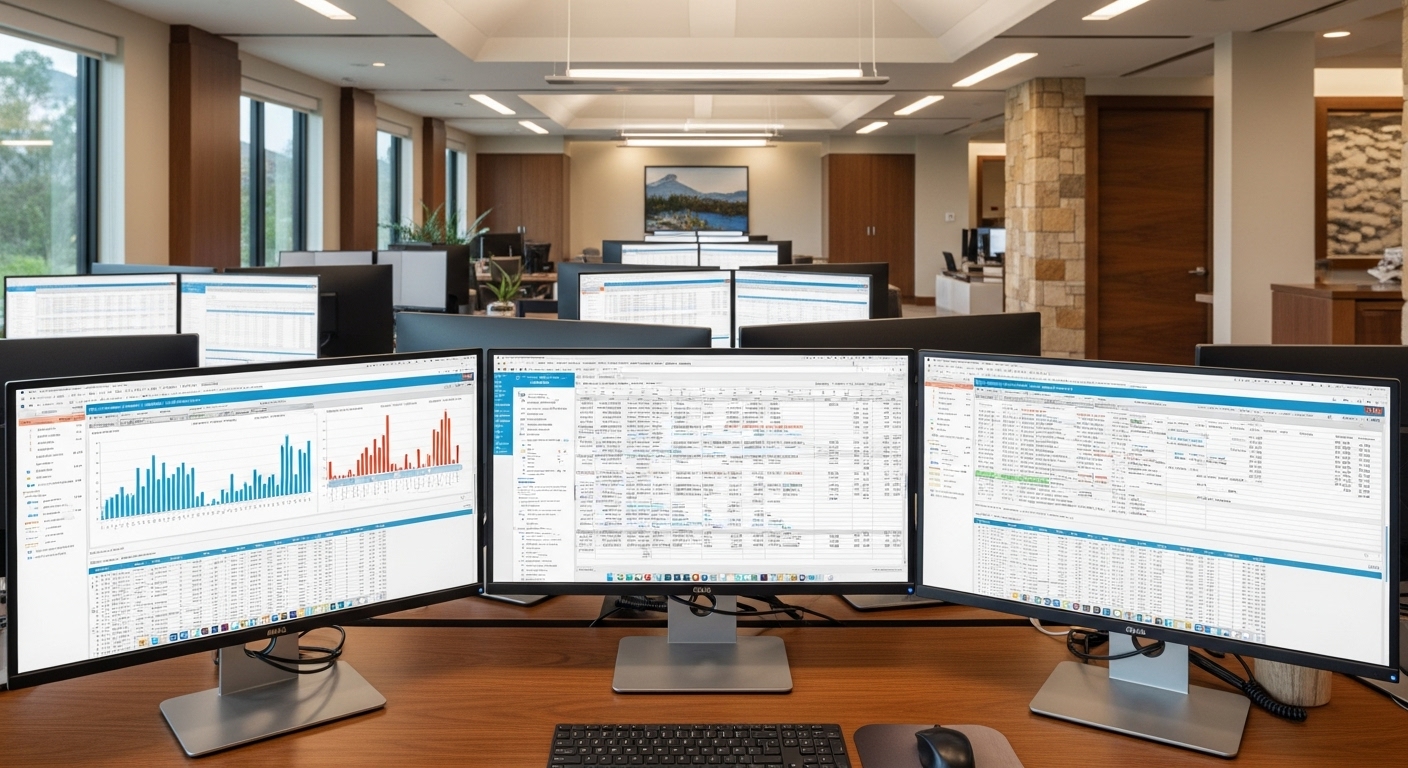
Sophisticated buyers often employ DCF analysis for larger acquisitions, projecting future cash flows and discounting to present value. Key assumptions include:
Revenue growth rates: Based on market conditions and competitive position
Margin sustainability: Analysis of cost structure and pricing power
Capital requirements: Working capital needs and equipment investments
Terminal value: Long-term sustainable cash flow generation
Asset-Based Valuation
Less common for operating businesses, but relevant for builders with significant real estate holdings or equipment assets. Components include:
Land inventory: Valued at current market prices less development costs
Work-in-progress: Valued at cost plus reasonable profit margin
Equipment and vehicles: Depreciated replacement cost
Intangible assets: Brand value, customer relationships, and intellectual property
Preparing for Maximum Valuation
Smart builders begin value optimization years before considering a sale. The most successful exit strategies involve systematic improvements across all value drivers.
Financial Optimization Timeline
36 months before sale: Implement comprehensive financial reporting and budgeting systems
24 months before sale: Optimize gross margins and working capital management
18 months before sale: Diversify client base and reduce concentration risk
12 months before sale: Complete management team development and succession planning
Operational Excellence Development
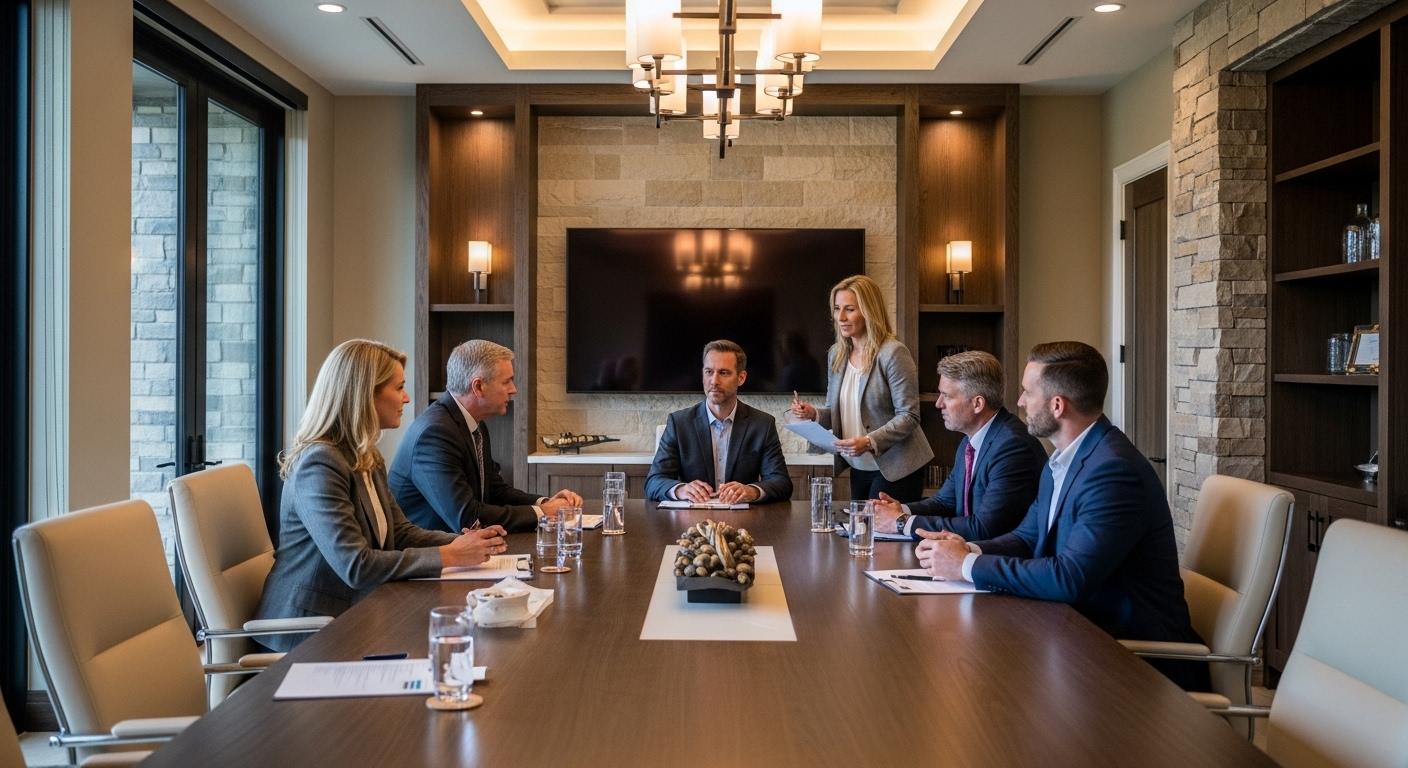
Process documentation: Create detailed procedures for all critical business functions
Quality system implementation: Establish consistent quality control and customer satisfaction metrics
Technology integration: Implement modern project management and communication systems
Team development: Invest in training and development for key personnel
Market Timing and Exit Strategy Considerations
The custom home building industry experiences cyclical valuations tied to economic conditions and real estate markets. Strategic timing can significantly impact exit valuations.
Optimal Market Conditions
Low interest rates: Increase buyer pool and financing availability
Strong luxury real estate markets: Demonstrate sustainable demand for services
Limited competition: Fewer quality builders available for acquisition
Economic stability: Reduced buyer concerns about recession risk
Strategic vs. Financial Buyers
Different buyer types offer distinct advantages and valuation approaches:
Strategic buyers (larger builders, related companies) often pay higher multiples for synergistic benefits
Financial buyers (private equity, family offices) focus on cash flow generation and growth potential
Individual buyers typically offer lower multiples but may provide better cultural fit
The most valuable custom home building companies share common characteristics: diversified revenue streams, operational scalability, strong market positions, consistent financial performance, and professional management teams. These value drivers don't develop overnight—they require years of strategic focus and systematic improvement.
For builders serious about maximizing their company's value, the time to begin optimization is now. Whether planning an exit in three years or thirteen, every improvement in these core value drivers compounds over time, creating exponentially higher valuations when the right opportunity emerges.
Ready to begin your value optimization journey? Contact our team for a confidential valuation assessment and strategic planning session designed specifically for luxury custom home builders targeting premium exit multiples.
